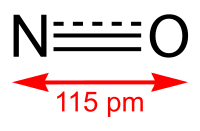
Photo from wikipedia
Due to serious eutrophication in water bodies, nitrogen removal has become a critical stage for wastewater treatment plants (WWTPs) over past decades. Conventional biological nitrogen removal processes are based on… Click to show full abstract
Due to serious eutrophication in water bodies, nitrogen removal has become a critical stage for wastewater treatment plants (WWTPs) over past decades. Conventional biological nitrogen removal processes are based on nitrification and denitrification (N/DN), and are suffering from several major drawbacks, including substantial aeration consumption, high fugitive greenhouse gas emissions, a requirement for external carbon sources, excessive sludge production and low energy recovery efficiency, and thus unable to satisfy the escalating public needs. Recently, the discovery of anaerobic ammonium oxidation (anammox) bacteria has promoted an update of conventional N/DN-based processes to autotrophic nitrogen removal. However, the application of anammox to treat domestic wastewater has been hindered mainly by unsatisfactory effluent quality with nitrogen removal efficiency below 80%. The discovery of nitrate/nitrite-dependent anaerobic methane oxidation (n-DAMO) during the last decade has provided new opportunities to remove this barrier and to achieve a robust system with high-level nitrogen removal from municipal wastewater, by utilizing methane as an alternative carbon source. In the present review, opportunities and challenges for nitrate/nitrite-dependent anaerobic methane oxidation are discussed. Particularly, the prospective technologies driven by the cooperation of anammox and n-DAMO microorganisms are put forward based on previous experimental and modeling studies. Finally, a novel WWTP system acting as an energy exporter is delineated.
Journal Title: Critical reviews in biotechnology
Year Published: 2019
Link to full text (if available)
Share on Social Media: Sign Up to like & get
recommendations!